Administration
Manage settings, users, partners, and templates
Managing Your Personal Settings
To access your personal settings, do the following:
- In the top right corner, click the menu icon and select your name.

- Select an option in the left column based on your preference.
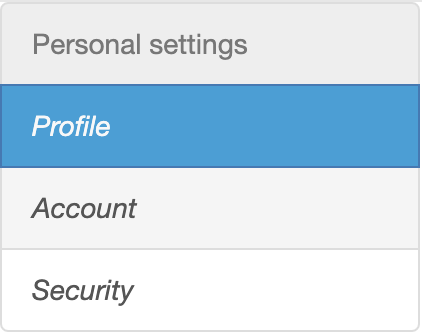
| Setting | Description |
|---|---|
| Profile | Update your name and email address |
| Account | Update your password |
| Security | Set up two-factor authentication |
- Follow the prompts to update the information based on the option selected.
Reset Password
If you forget your password, do the following:
- From the login screen, enter your user name and then click Forgot Password.
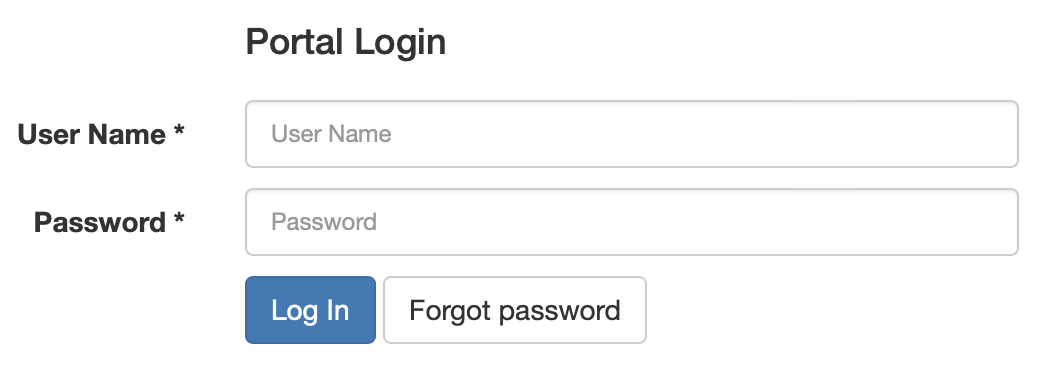
- Follow the prompts to reset your password.
Manage Users
Select Manage and then click Users in the left column. A list of users displays.
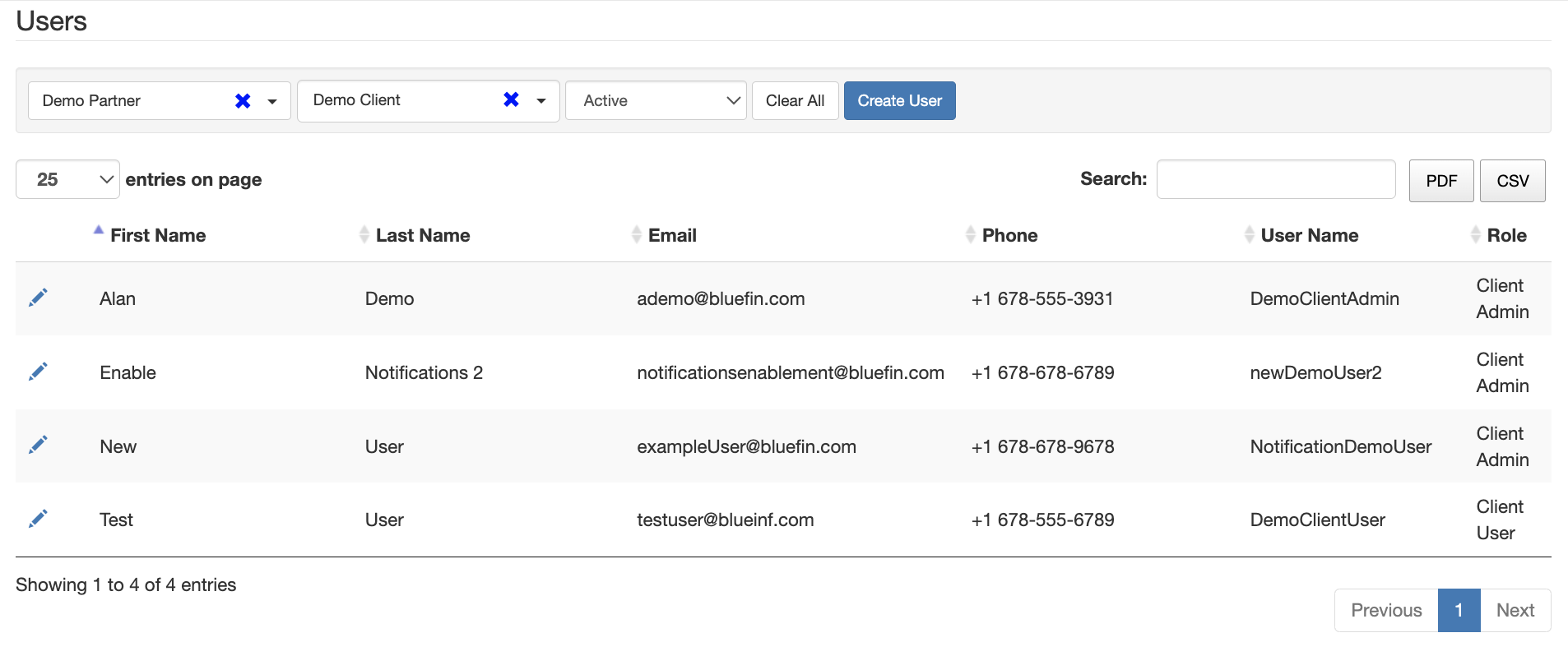
Use the filters at the top to sort the list by partner, client, and status.
Adding a User
- Select Manage > Users and then click Create.
- Enter the user’s information.

3. Check the Active check box.
- Select a Role.
- Click Send welcome email.
- Click Save when you’re done.
Updating a User
To update a user’s information, click edit (the pencil icon) next to the appropriate name. Edit the fields as needed and click Save when you’re done.
Note
To deactivate a user, deselect the Active checkbox.
Resetting a User’s Password
To reset a user’s password, do the following:
- Select Manage > Users.
- Locate the user in the list and click Edit.
- Select the checkbox next to Send welcome email. (The user will receive an email with a link to access the system. They will be prompted to update their password.)
- Click Save.
Note
Users can also reset their own passwords from the login screen by clicking Forgot password.
Manage Partners
Important
Depending on your desired hierarchy, partners can create sub-partners. This is restricted to Partner and System roles.
This is also referred to as a root partner. This function is restricted to System Administrators.
To set up a partner or sub-partner under your partner record, do the following from the Manage tab:
- Click Partners in the left column.
- Click Create.
- Enter the information requested for the required fields.
| Field | Description |
|---|---|
| Parent Partner | Select partner from the drop-down list when applicable. Note: You must select a Parent Partner when creating sub-partners. |
| Name | Required. Enter the sub-partner’s name |
| Partner ID | Required. Enter the Partner ID. Best Practice: Try using the partner name entered as one word in lower case. The value must be unique. Note: Bluefin will assign a unique ID, Partner ID, to the partner. |
| Status | Required. Select the partner’s status |
| Verification Phrase | Optional. |
| Billing ID | This is not required when creating sub-partners. |
| Contact Person | Required. Enter: First Name, Last Name, Email address, Phone and User Name. Best Practice: Use first initial and last name and email address for the user name. (Example: jdoe@yourcompany.com.) Select the Active checkbox to enable the contact person. Note: A user record is automatically created for the contact person. By default, the contact person is granted the Partner User role. |
| Remember Devices | Optional. |
| Two-factor Authentication | Select the checkbox to enable two-factor authentication. When it is enabled, it will affect all users who belong to the Client or Partner record. |
| Welcome Email | Select the checkbox to send new users a welcome email. This option is selected by default. |
- Click Save when you’re done.
Manage Clients
Note
This is restricted to Partner and System roles.
Adding Clients
To add Clients, do the following from the Manage tab:
- Click Clients in the left column.
- Click Create.
- Enter the information requested for the required fields.
| Field | Description |
|---|---|
| Direct Partner | Required. Select the partner from the list. |
| Name | Required. Enter the client’s name. |
| Active | Optional. Select the checkbox to enable the client. |
| Billing ID | Optional. |
| Mid | Optional. |
| Contact Person | Required. Enter: First Name, Last Name, Email address, Phone and User Name. Best Practice: Use first initial and last name and email address for the user name. (Example: jdoe@yourcompany.com.) Select the Active checkbox to enable the contact person. Note: A user record is automatically created for the contact person. By default, the contact person is granted the Partner User role. |
| Remember Devices | Optional. |
| Two-factor Authentication | Select the checkbox to enable two-factor authentication. When it is enabled, it will affect all users who belong to the Client or Partner record. |
| Welcome Email | Select the checkbox to send new users a welcome email. This option is selected by default. |
- Click Save when you’re done.
Important
At the time a client record is created, a client admin user is also created. To add additional users, refer to - Adding a User.
To display the client after you enter it, make sure your partner name is displayed at the top of the page as shown here:

Editing a Clients Contact Person
Important
Do not Edit the Contact Field. Instead, click Update Contact Person.
- Select Manage > Clients.
- Select the Partner from the drop-down list at the top of the page.
- Select the appropriate Client from the list. (Click the edit icon.)
- Scroll to the bottom of the page and then click Update Contact Person.

- Select the new contact person from the drop-down list. If the new contact person is not listed, you must create their user record first.
- Click Update when you’re done.
Templates
Managing Templates
All data that flows through ShieldConex is related to a template. Create a template for a group of fields that should be handled as a single transaction.
To set up Template, do the following from the Manage tab:
- Click Templates in the left column.
- Click Create.
- Enter the information requested for the required fields.
| Field | Description |
|---|---|
| Parent Partner | Required. Select partner from the drop-down list when applicable. NOTE: You must select a Parent Partner when creating sub-partners. |
| Client | Required. Select client from the drop-down list. |
| Name | Required. Enter the partner’s name |
| Reference | Required. Click Generate to associate a unique ID with this template. TIP: If you are using the template without the Bluefin iFrame, you will need this ID and the ShieldConex API to secure your webpage. |
| Fields | Click Add to set up new template fields. |
| Field Configuration Dialog Box | Complete when adding / editing template fields. Field Name: Required. Enter the system field name. Note: Special characters and spaces are not allowed. Method: Select a security method from the drop-down list [Format Preserving Encryption (FPE), Format Preserving Tokenization (FPT)] Data Type: Required. Select an option from the drop-down list. Validation: Required. From the drop-down list, select a validation type for the data type. Note: The options are dynamic based on the Data Type. Mask: Required. From the drop-down list, select how the data that is entered should be masked. Note: The options are dynamic based on the Data Type. Tip: TOKEN_ALL = mask all. The following fields additionally display for FPT only: Group ID: Enter a number or click the Up / Down. luhnCheck: Select the checkbox if applicable. This parameter determines if a value is validated by the Luhn algorithm. A Luhn algorithm is used to validate a credit card number or other identifying numbers, such as Social Security numbers. If you select this option, ShieldConex will only allow valid values. Selecting this option enables you to authenticate that a personal identification number. If you do not select this option, any value can be entered in this field. nonIdempotentTokens: Select the checkbox if applicable. This parameter determines if the same or different tokens are generated for the same input. If you select this option, ShieldConex will generate different tokens even if the same value is entered in a field repeatedly. If you do not select this option, the same token will be used each time the same value is entered in a field. |
| iFrame Options | Sort Order: Controls the order in which the fields will display from left-to-right and from top-to-bottom. Label: Display field name. Input Type: Required. Select an option from the drop-down list (Input, Select, Password). If you choose Select, you will be prompted to enter possible values. Min Length / Max Length: The minimum and maximum character length is set by default based on the Data Type. (The maximum length is 128.) IMPORTANT: Click Save in the Field Configuration dialog box when you're done. |
| Custom Style File | Optional. Enter the path to a style sheet (CSS). You can use a stylesheet to control the size of fields. |
| Custom Styles | Optional. Enter CSS code to override styles as desired. |
| Favorite | Select the checkbox based on your preference. |
| Publish | Select the checkbox to publish the template when you're ready. Important: The template cannot be modified after it's been published. |
- Click Save when you’re done.
After saving updates in the Field Configuration dialog you can preview your work.
Important
After saving updates in the Field Configuration dialog, you will still need to Save the Template before closing out of the Add/Edit Template page.
Previewing Templates
To preview a template, Save it. Then select it from the list and at the bottom of the page click Preview.
Updating Unpublished Templates
To update an unpublished template, do the following from Manage > Templates:
- Click the edit icon next to the template of your choice.
- Update the options as needed.
- To edit custom fields, click the edit icon in the Actions column for the field of your choice.
- Click Save in the Field Configuration dialog box when you're done. Click Save in the templates
Updating Published Templates
To update a published template, click Clone. This generates a duplicate template. Then, modify the newly cloned template with your updates.
Viewing iFrame Code
To view the iFrame source code, the template must be Published. Click Sample at the bottom of the page and then view the page source.
Implementing iFrames
The following skill set is required to implement an iFrame: HTML5, CSS, Javascript, database knowledge and SQL.
Note
Javascript must be enabled in the users browser.
Proxy Configurations
In this section, you can manage your Proxy Configurations, which determine how requests to ShieldConex Proxy are handled.
ShieldConex Proxy leverages detokenization to seamlessly relay sensitive data embedded in JSON or XML messages between the merchant and the processor. It ensures secure and efficient data flow from a client with tokens to an endpoint that requires sensitive data so that the client's environment can operate without handling raw data elements. To learn more about ShieldConex Proxy, check out the ShieldConex Proxy Guide.
The first step in setting up ShieldConex Proxy is to create a custom configuration. From Manage > Proxy Configurations create a Proxy Configuration via the ShieldConex® Manager. Under the Manage Proxy Configurations tab, select your partner name and client from the dropdown and click on 'Create Proxy Configuration'.
From here, give your Proxy Configuration a name, and generate a reference value. The chosen partner name and client must also be selected. Then, in the box below, copy in the Proxy Configuration given by the chosen API Example. Replace any {variables} with the corresponding environment variable or authentication token, and save the configuration.
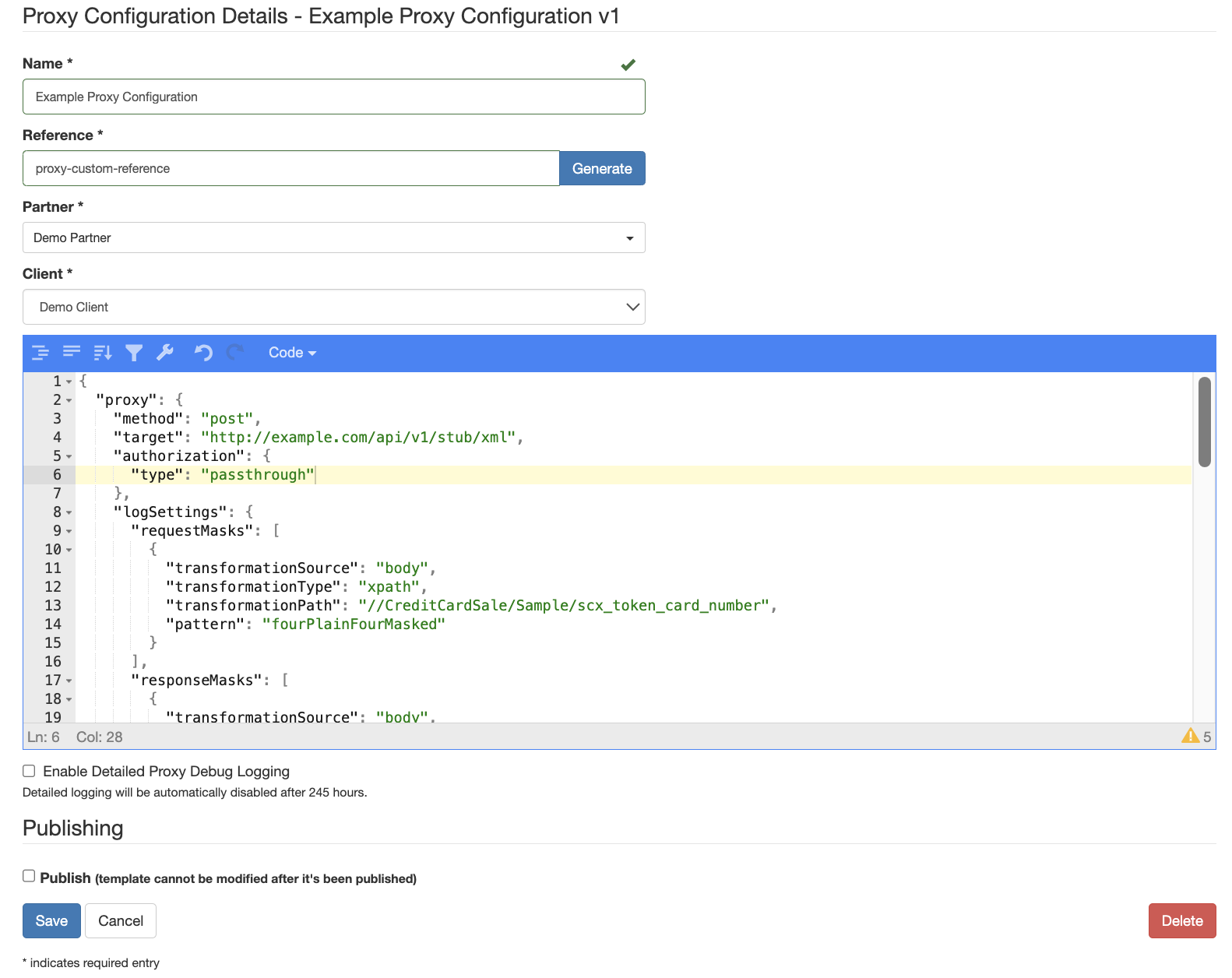
Once the configuration has been saved, you should see it appear in the list of available Proxy Configurations. The reference that was generated and appears now in the list is known in this document as the configReferenceID - this is required for the request configuration.
System Notifications
The Notifications banner displays as needed when alerts from the administrator are published. After reading a notification, you can select it and then click Dismiss to remove it. To hide the banner, click Continue. To review unread notifications, click the red notifications icon in the top right corner to see a list.
From Manage > System Notifications you can also review notifications and Dismiss them.
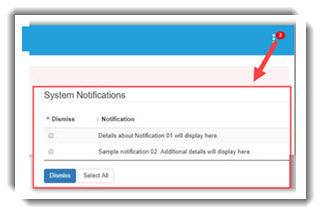
Updated about 1 year ago
